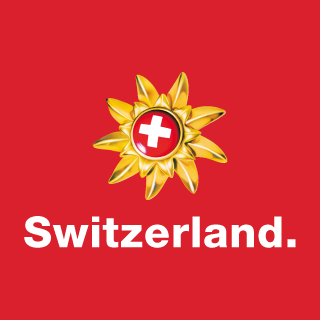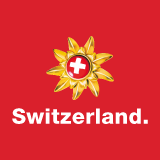The most beautiful mountain passes in Switzerland
Intro
Switzerland is a true paradise for cyclists looking for a challenge: the country has close to 70 road passes at an altitude of more than 1,000 metres. Here is a list of the ten most beautiful.
Saint Gotthard Pass A route in use since the 13th century, it is one of the main roads through the Alps with the Mont Blanc tunnel to the west and the Brenner Pass further to the east.
Saint Gotthard Pass
Luckily, a 17-kilometre long gallery that opened in 1980 absorbs most of the transit traffic, and tourists usually take the main road through the pass, which is forbidden to cyclists.
So where do they go? They make one of the most extraordinary ascents in existence: the Via Tremola, a road built on the south side of the pass between 1827 and 1832, whose most spectacular section includes 24 hairpin bends in barely four kilometres. And that’s not all: the last five kilometres are cobbled. Nothing like the traditional cobblestones in the north, however, as these ones are perfectly carved from granite and very orderly.
Visually, the Via Tremola is unique. The average gradient is 7% and does not exceed 10% until the summit at 2,106 metres. The cobbles slow you down but you stop so often to take photos that you don’t even notice. On this pass, you forget about performance and only the participants in the Tour de Suisse, who have taken this road almost 40 times since 1933, give it their all.
Grosse Scheidegg Pass Both sides of this unusual mountain pass located in the Bernese Oberland deserve to be climbed.
Grosse Scheidegg Pass
Leaving Meiringen, the road narrows after less than two kilometres and the gradient rises above 10% as soon as you enter the woods. You will then reach a welcome flat section before Rosenlaui. Although you have already been climbing for ten kilometres and have gained 700 metres, it is here that the Grosse Scheidegg Pass really begins. After Schwarzwaldalp, no motor vehicles are allowed except for the famous PostBus. You climb surrounded by the alpine rock face and glaciers that stretch 1,700 metres above you. The last bends under the Wetterhorn (3,962 metres) are spectacular. You reach the summit at an altitude of 1,962 metres and discover the best known north face in the Alps: the Eiger.
From Grindelwald, the ascent is harder: you climb for 6.5 kilometres at an average gradient of 11%. Vehicle traffic is also restricted from the famous Wetterhorn Hotel.
Albula Pass The Albula Pass (2,315 metres) is one of the mountain passes providing access to the Engadin region in the canton of Graubünden.
Albula Pass
From Filisur, on the north side, it is a long (23 kilometres) and beautiful climb that is never too difficult. There are many unspoilt villages along the road where you can stop for something to eat or drink. After Bergün, the road passes under the bridges of the Albula railway, which has UNESCO World Heritage status. The final part of the ascent winds through the rocks in beautiful alpine scenery.
At the summit, an almost deserted plateau welcomes cyclists coming from La Punt on the other side. The ascent is shorter but it lets you admire the magnificent Engadin Valley.
Sanetsch Pass The ascent of the Sanetsch Pass starts in the Rhone Valley and winds through the vineyards of Valais, Switzerland’s largest wine-growing canton.
Sanetsch Pass
After leaving the vines, you enter a narrow valley with some steep sections. You have already climbed more than 1,000 metres but the ascent is far from over. In fact, the best is yet to come. A few bends later, you reach the high pastures, surrounded by the summits of Sanetschhorn and Arpelistock. A few more turns and you enter a dark, damp tunnel that continues for 800 metres through the rock face.
The last kilometres after the tunnel seem endless but you finally reach the summit at 2,252 metres, close to the Tzanfleuron Glacier. Yes, it’s a climb of more than 1,700 metres. In 25 kilometres. The Swiss equivalent of the famous Stelvio Pass without the incessant flow of camper vans, cars and motorbikes going by.
Sanetsch Lake, a few kilometres from the summit, marks the end of the route. Does this mean you need to turn back? No: attach your bike to a cable car and descend 1,000 metres to Gsteig in the canton of Bern, from where you can continue your route. A unique experience.
Grimsel Pass The Grimsel Pass links the Haslital Valley in the Bernese Oberland to Goms in the Valais.
Grimsel Pass
Leaving Innertkirchen, the north slope first climbs gently then crosses magnificent gorges that become increasingly narrow. Huge granite slabs overhang the road. The second part of the ascent features several reservoirs: Räterichsboden Lake, Grimsel Lake and the Totensee at the summit at 2,165 metres. The pass offers breathtaking views: the Rhone Glacier sparkles in the distance and the peaks of the Finsteraarhorn, Schreckhorn and Wetterhorn – some of the most impressive Bernese Alps – are reflected in the surface of the lakes.
On the other side, the road climbs from Oberwald through pine trees before arriving in Gletsch where it forks, leading to the Furka Pass on the right and the Grimsel Pass on the left. The summit is reached via a series of long straight sections broken up by hairpin bends from which you can see the Furka Pass road in the distance. A view that is world-famous among cyclists.
Col de la Croix Pass At 1,778 metres, the Col de la Croix Pass in the canton of Vaud is not one of the highest in Switzerland. But you would never know it: its south side starts at 500 metres down in the Rhone Valley.
Col de la Croix Pass
With an elevation of more than 1,300 metres over a distance of 23 kilometres, this pass is one of the most difficult in Switzerland. After leaving the Chablais vineyards, you pass through a series of hamlets before arriving at Villars-sur-Ollon, a well-known stage of the Tour de Romandie and the Tour de Suisse, the two Swiss competitions on the UCI World Tour. The final part of the ascent continues on a narrower path through pastures.
The other side is shorter: leaving Diablerets, you climb 700 metres on a medium slope of 7% through impressive alpine scenery.
Susten Pass The Susten Pass was constructed between 1938 and 1945 and connects Innertkirchen in the canton of Bern with Wassen in the canton of Uri.
Susten Pass
Both sides begin in the wooded valleys and climb through alpine scenery but the west slope offers cyclists the best experience thanks to its many bends and varied terrain.
The start of the ascent alternates steep and flat sections. At Gadmen, things get more serious: the gradient is never arduous but the final part covers 13 kilometres, made easier by the view of the Sustenhorn and the Stein Glacier. After 11 tunnels and 12 switchbacks, the summit is at 2,224 metres. A 300 metre-long tunnel leads to the other side and the descent towards Wassen. The ascent of the Susten Pass from the other side is also superb although the long climb from the Meiental Valley can seem rather disheartening. Happily, the alpine scenery offers a welcome distraction.
Klausen Pass The Klausen Pass, for which the road was opened in 1948, connects the canton of Uri with the canton of Glarus.
Klausen Pass
On the west side, you climb the Schächental Valley. After Unterschächen, the road winds its way towards the heights with two wide turns then rises on the north side of the valley. From there, the view opens up over Aesch and the Stäuben waterfall from a height of almost 100 metres. The narrow road is cut into the cliff face. At the Klausenpasshöhe Hotel, just below the pass at 1,948 metres, you can enjoy a view of the snow-topped peaks of the Clariden and the rocky summits of Gross Windgällen.
The slope begins at Linthal and goes through Urnerboden, a long plateau that makes up the largest Swiss alpine pasture, before a series of spectacular hairpins that lead to the pass.
Furka Pass Open since 1867, the road connects Realp in the canton of Uri with Goms in Upper Valais. The pass is well-known to fans of cinema as it was the location for one of James Bond’s famous car chases in Goldfinger.
Furka Pass
Leaving Realp, you climb above the Urseren valley to reach high altitude, arriving at the summit at 2,429 metres. The gradient is constant but not steep: it stays at 8-9% with two kilometres of respite at 5% near the hamlet of Tiefenbach.
On the other side, you first take the road that leads to the Grimsel Pass. Turn right at Gletsch to climb towards the Rhône Glacier and the famous Belvédère Hotel. From there, it is only two kilometres to the summit.
Nufenen Pass This pass, the highest located completely in Switzerland at 2,477 metres, was only opened in 1969. Its north slope is a formidable ascent: you climb 1,100 metres in 13 kilometres, an average gradient of 8.5%.
Nufenen Pass
A little way after leaving Ulrichen in Upper Valais, the first series of bends quickly gets the cyclist in the mood. Then, long straight sections lead to a mountain cirque. You pass by a farm that sells goat’s cheese, a good excuse to have a break before tackling the last part of the climb. On the right, you see the threatening rock face of the Fühlhorn (2,862 metres) and, on a ridge, wind turbines remind you that the wind blows strongly here. At the summit, the view is magnificent and reveals a small alpine lake overlooking the Bedretto Valley, a high Ticino valley that continues to Airolo. It is from here that the southern side of the pass, situated in the canton of Ticino, departs. Interspersed with several sloping ledges, the ascent is long (24 kilometres) but never steep.

